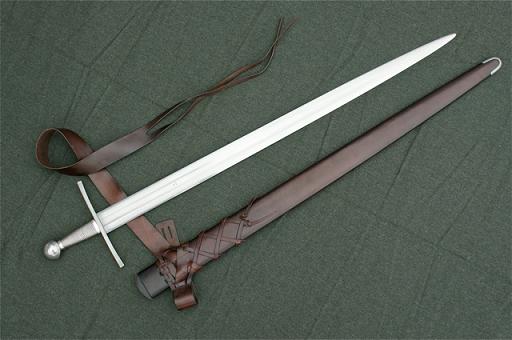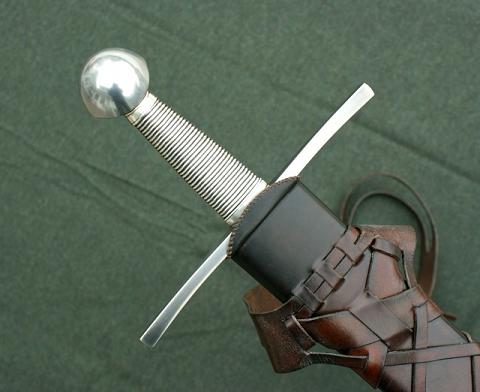Posts: 1,757 Location: Storvreta, Sweden
Wed 03 Jul, 2013 6:53 am
Thank you guys for your kind words.
It is great to know the sword is with you Tim. The process of making goes from something barely imagined to an object that has a reality all of its own as it goes out in the world from the workshop.
The pommel is indeed of a type you rarely see in reproductions but it survives in a number of originals.
Geibig classifies the pommel as type 14 if I am not mistaken (I am writing this away from my books: better double check this as I get home :-). The guard has a subtle curvature to it, almost a sea gull wing form. You see this on swords spanning a pretty wide time frame actually.
With this hilt type and blade shape the sword would be dated to the early or mid part of the 12th century.
It is long and slim with good reach. Its
point of balance is pretty far away from the hilt, but its overall mass is low. This makes for a sword that combines a nimble balance with authority when committed to a slashing/cleaving cut.
The blade is fairly thin and the fuller is not very deep. This is another feature it shares with some 12th century swords.
The scabbard is an attempt to make a mid 12th century style. Looking at art from the period we do not see the iconic integral laced belt of the 13th and early 14th century of the kid we are used to. Instead there are some enigmatic depictions of thongs in a basket weave in the upper quarter or third of the scabbard. It also seems like the slashes in the scabbard cover is still includes a central cut, like a remnant of the scabbard slide of previous centuries. This was what I came up with to combine those features depicted in art. A prequel to the laced belt of the later periods.
Below are a few examples of depictions of swords with this kind of suspension.
Any questions and comments are welcome.
-Thanks!
 Attachment: 176.33 KB
Attachment: 176.33 KB

Obvious basket weave, but not so obvious attachment for the belt itself...
 Attachment: 127.98 KB
Attachment: 127.98 KB
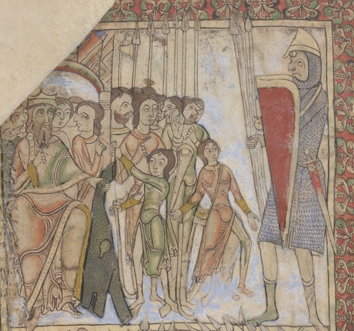
The scabbard for the sword of Goliath has some kind of basket weave going on, but there is also an enigmatic red sleeve thing at the top. Perhaps just a different coloring, or a separate layer? I cannot make up my mind...
 Attachment: 202.17 KB
Attachment: 202.17 KB
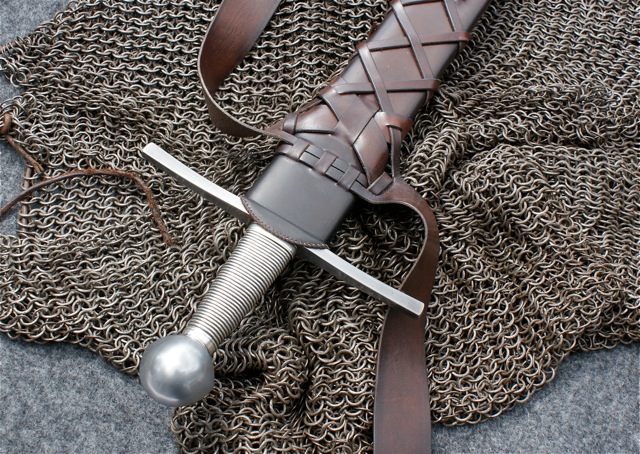
Another shot of the sword in its scabbard.
 Attachment: 106.3 KB
Attachment: 106.3 KB
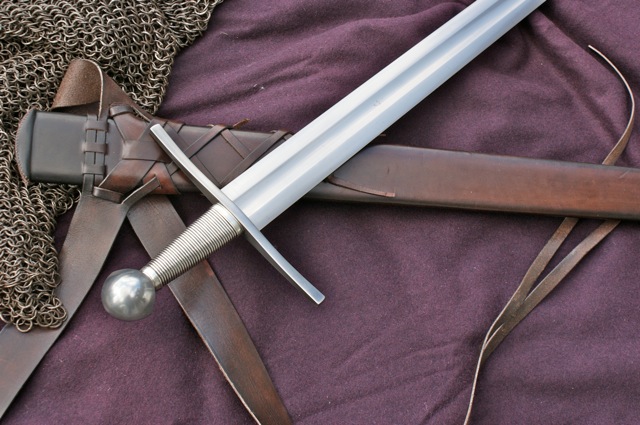
...and another one.
 Attachment: 160.58 KB
Attachment: 160.58 KB
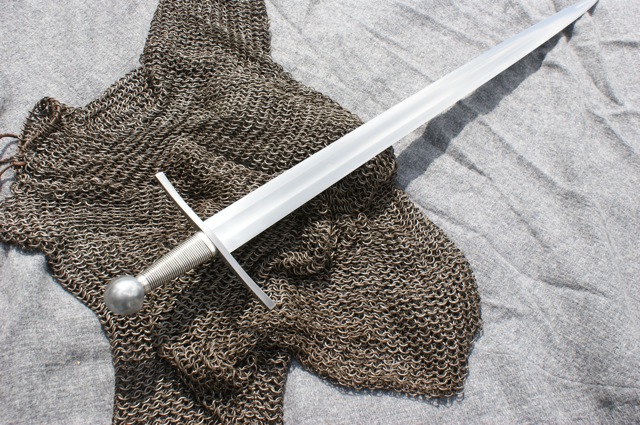
And one showing (almost) the whole blade.
